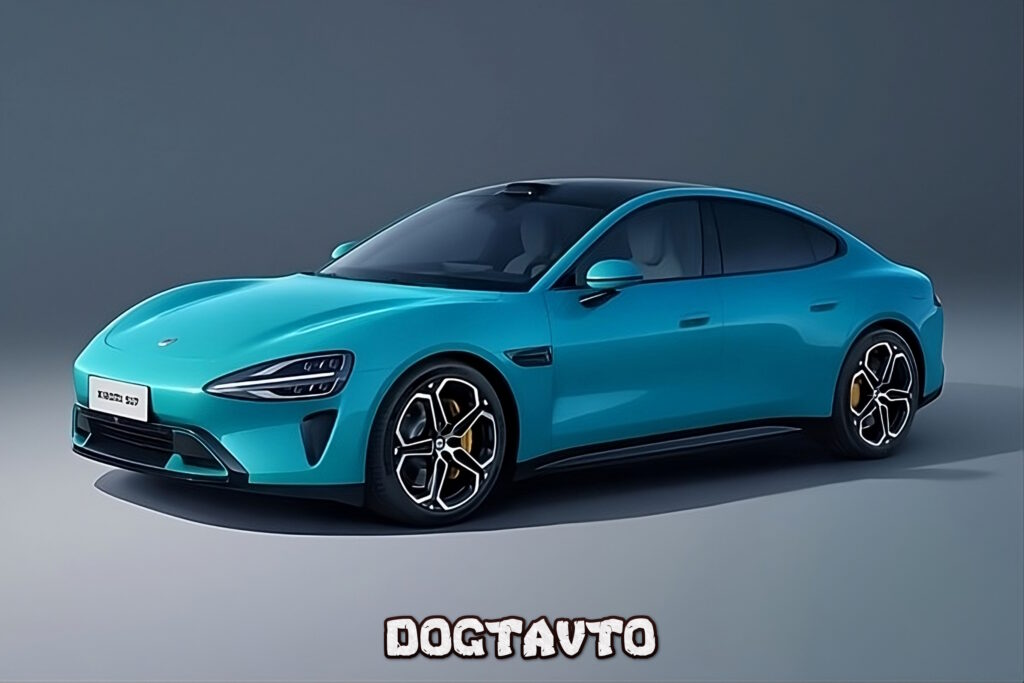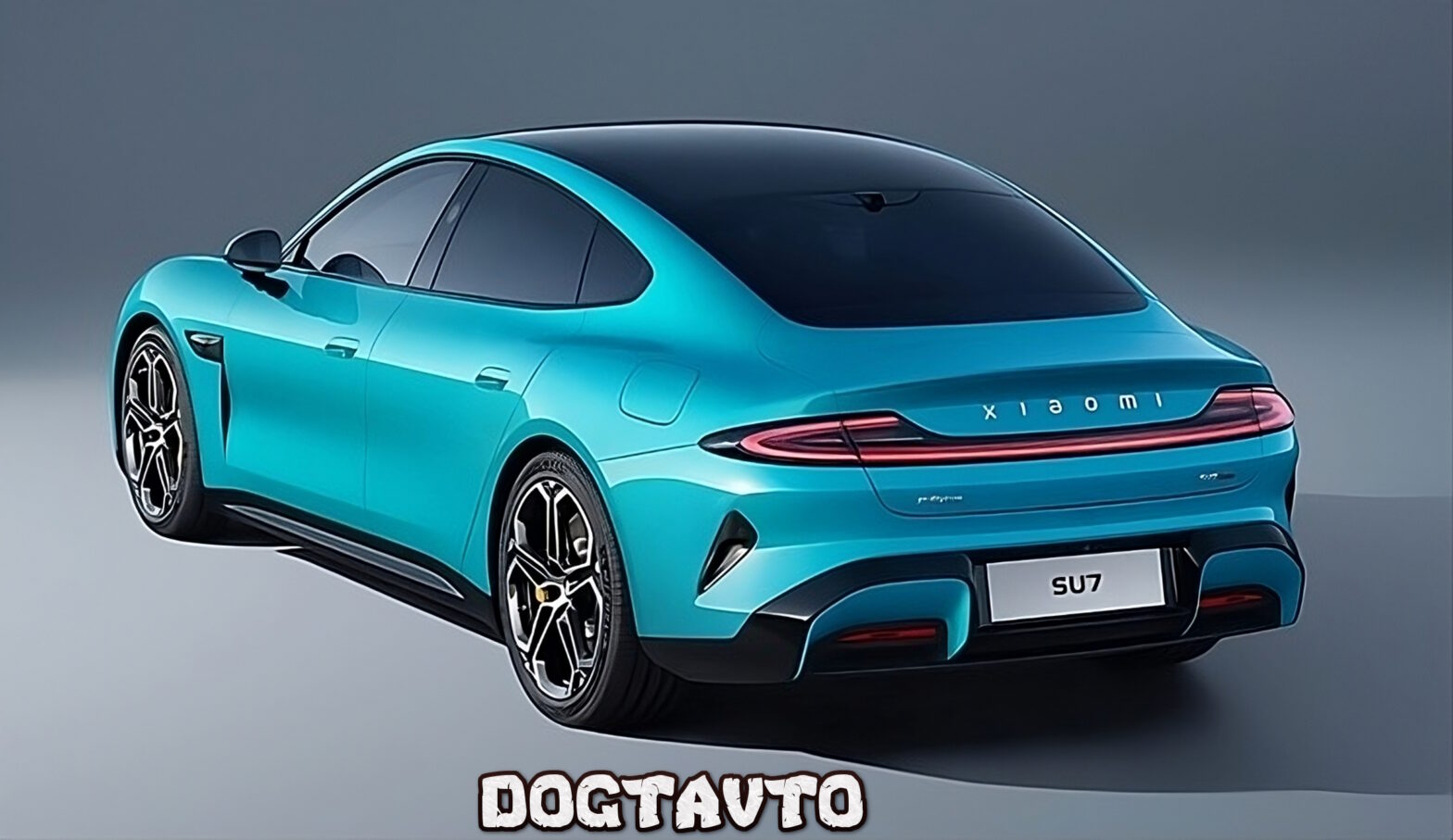Xiaomi is mostly known for making consumer electronics, and a month ago we learned a lot of details about the company’s first car through early leaks. At today’s big launch event, we saw many details of Xiaomi’s SU7 electric car.
In terms of dimensions, the sedan is almost comparable to the Tesla Model S: 4997 mm in length, 1963 mm in width and 1455 mm in height (in the basic version). The wheelbase is 3000 mm. Aerodynamics are excellent: The Cd coefficient is only 0.195. Behind the saloon there is a main trunk with a capacity of 517 liters and an additional trunk with a capacity of 105 liters.

The car is based on the original Modena platform and is equipped with an electrical system with an operating voltage of 871 V. The traction battery has a capacity of up to 150 kW. The traction battery has a capacity of up to 150 kWh and a maximum range of 1,200 kilometers on the Chinese CLTC cycle. A liquid-cooled thermostatic system with a dual-mode heat pump is fitted. Air suspension – double wishbone at the front and multi-link at the rear. Cell-to-Body technology is used, where the battery box is integrated into the power frame of the body. Torsional stiffness reaches 51,000 Nm/s.
In the production of Xiaomi’s electric car, a new type of monolithic technology, first introduced by Tesla, is used. This equipment is used to injection mold large body elements with a force of 9100 tons. In this way, the weight of a component could be reduced by 17 percent and costs by 40 percent. The same Tesla car now uses a GigaPress integrated injection molding machine supplied by the Chinese company Lijin with an injection force of 9,000 tons. The main disadvantage of GigaPress technology is that it increases the complexity and cost of repairing the car after an accident, so to protect the unibody subframe, Xiaomi leaves an enlarged deformable area behind the bumper.
Autopilot has also become part of the Modena platform. Xiaomi’s proprietary package includes a LiDAR, 11 cameras, three millimeter wave radars and 12 ultrasonic sensors. It runs on two Nvidia Orin chips with processing power of up to 508 tops (trillion operations per second). Also unveiled is Xiaomi Surge OS, which enables full integration and seamless use of Xiaomi’s mobile devices, smart home systems and automobiles. In the SU7 sedan, in-car electronics are powered by a Snapdragon 8295 chip that supports fast over-the-air updates: three minutes for the media system and 30 minutes for the car’s control system.
The digital instrument panel has a diagonal of 7.1 inches, the media system screen is 16.1 inches with 3K resolution, and the windshield has a projection with a maximum brightness of 13,000 nits. The abundance of physical buttons and knobs under the screen and in the center channel is unusual by modern standards. The car offers three colors of nappa leather upholstery (white, black and red), enhanced rear lighting, a panoramic sunroof and a 15-speaker sound system.

Three types of electric motors have been launched on the Modena platform, and the Hyper Engine V6, V6s and V8s with their traditional “gasoline” names. The V8 engine will be launched in 2025 and will be able to rev up to 27,200 rpm. initial outputs will be 578 hp and 635 Nm, with 98.11 percent efficiency. The V8 engine will be available in 2025 and will be able to rev up to 27,200 rpm. The Xiaomi SU7 sedan is already fitted with a ‘hexagon’ engine that revs at 21,000 rpm.
The base version of the SU7 Pro is equipped with a 400-volt V6 engine (299 hp, 400 Nm) on the rear axle (previous data with front-wheel drive has proven to be incorrect). A lithium iron phosphate traction battery with a capacity of 73.6 kWh is installed under the cabin floor and has a range of 668 kilometers on the CLTC cycle.
The all-wheel drive version of the Xiaomi SU7 Max has such a V6 engine mounted on the front axle, while the 800-volt V6s engine (374 hp, 500 Nm) is mounted on the rear axle. Together they produce 673 hp and 838 Nm, enabling the 2205 kg sedan to accelerate to 100 km/h in 2.78 seconds. Top speed is 265 km/h. The traction battery is a lithium-ion battery with a capacity of 101 kWh, which gives it a range of up to 800 kilometers. It takes just five minutes to fill the battery for a brisk 220-kilometer journey and 15 minutes for 510 kilometers.
To sell its electric cars, Xiaomi has opted for the option of placing prototypes in the brand’s existing sales centers where orders can be placed. The reconstruction of such stores has already started in China. Prices will be announced closer to the start of sales next year.

